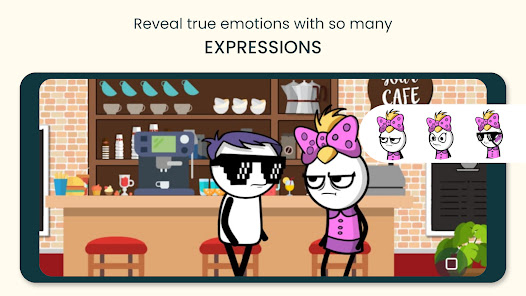AI Tools for Content Creation: Revolutionizing the Creative Process
1. The Role of AI in Content Creation
AI-driven content creation tools are designed to mimic human capabilities in writing, design, audio, and video production. At their core, these tools rely on machine learning algorithms, natural language processing (NLP), and neural networks to analyze vast amounts of data and generate content based on patterns and rules.
The primary benefits AI brings to content creation include:
- Automation of Repetitive Tasks: AI can take over mundane tasks such as proofreading, grammar correction, keyword placement, and even brainstorming content ideas.
- Enhanced Creativity: AI tools offer new perspectives and creative inputs that humans may overlook, helping creators explore fresh angles.
- Time Efficiency: Content creators can save time by letting AI handle routine tasks, enabling them to focus on more strategic or high-level creative work.
- Personalization: AI can analyze audience behavior and preferences to create tailored content that resonates with specific target groups.
- Scalability: AI-generated content can be scaled up effortlessly, allowing creators and businesses to handle larger volumes of work without compromising quality.
Let’s now explore some of the most popular and innovative AI tools for different areas of content creation.
2. AI Tools for Writing and Text Generation
A. OpenAI’s GPT (Generative Pre-trained Transformer) Models
One of the most advanced and widely used AI writing tools is OpenAI’s GPT, currently at its fourth version (GPT-4). These language models are trained on massive datasets and can generate human-like text based on prompts. Whether it’s writing blog posts, product descriptions, social media captions, or even creative stories, GPT-based tools can produce high-quality content in a fraction of the time it would take a human.
- Key Features:
- Generates articles, summaries, and reports.
- Supports multiple languages.
- Can be customized for specific writing styles.
B. Jasper AI
Jasper AI is an AI-powered writing assistant that specializes in marketing content, blog posts, and copywriting. It offers a variety of templates for content creation, including email campaigns, SEO-focused articles, and social media posts.
- Key Features:
- Pre-built templates for various content types.
- AI-generated content optimized for SEO.
- Integration with Grammarly for grammar checking.
C. Copy.ai
Copy.ai is another AI writing assistant designed for marketers, social media managers, and copywriters. Its AI can generate a wide range of text, from product descriptions to ads and landing page copy. It’s especially useful for generating creative ideas for social media posts or brainstorming blog topics.
- Key Features:
- Offers AI-driven brainstorming tools.
- Generates creative and engaging short-form content.
- Multi-language support.
D. SurferSEO
SurferSEO is a unique blend of AI and SEO optimization. It analyzes top-performing content in real time and suggests improvements for your writing, such as keyword density, structure, and readability. It's an essential tool for bloggers and marketers aiming to improve their content's ranking on search engines.
- Key Features:
- Provides SEO guidelines while writing.
- Analyzes competitors' content.
- Offers suggestions for improving on-page SEO factors.
3. AI Tools for Graphic Design
AI isn’t just changing text-based content; it’s also transforming visual content creation. Here are some AI-powered tools that are revolutionizing graphic design.
A. Canva AI
Canva is already a household name for simple yet powerful graphic design, but it now incorporates AI to further simplify the design process. With the integration of AI, Canva enables users to auto-generate design layouts, suggest color schemes, and even offer template suggestions based on the user’s design preferences.
- Key Features:
- AI-powered design suggestions.
- Auto-generation of elements like fonts, icons, and images.
- User-friendly interface that doesn’t require prior design experience.
B. DALL·E
DALL·E, an AI image generator from OpenAI, can create unique visuals based on text prompts. It’s ideal for creators who need custom illustrations, concept art, or unique images without hiring a graphic designer. DALL·E allows content creators to explore new realms of creativity and generate visuals that would otherwise be time-consuming or costly.
- Key Features:
- Generates images from descriptive text inputs.
- Can produce abstract, realistic, or artistic visuals.
- Saves time on sourcing stock images or commissioning custom artwork.
C. Artbreeder
Artbreeder is an AI-based platform that allows users to blend images and create new artworks by adjusting parameters like style, colors, and features. This tool is especially useful for artists looking to experiment with portraits, landscapes, and anime-style art.
- Key Features:
- AI-driven image blending and morphing.
- Customizable features for portraits and artworks.
- Community-driven platform to collaborate with other artists.
4. AI Tools for Video Editing and Production
The rise of video content on platforms like YouTube, Instagram, and TikTok has made video editing a crucial part of content creation. AI tools can help automate and enhance various aspects of the video editing process.
A. Runway
Runway is an AI-powered video editing tool that allows creators to remove backgrounds, enhance footage, and apply special effects with minimal effort. It’s particularly useful for creators who need professional-grade editing but don’t have the expertise in advanced video editing software like Adobe Premiere Pro.
- Key Features:
- AI-driven video background removal.
- Real-time object tracking and masking.
- Special effects like slow motion and transitions powered by AI.
B. Descript
Descript is an AI tool that simplifies audio and video editing by converting speech into text and allowing users to edit their content just like they would a text document. It’s perfect for podcasters, vloggers, and content creators who want to streamline their editing process.
- Key Features:
- Transcription-based video and audio editing.
- AI-driven voice cloning and synthesis.
- Automatic removal of filler words and pauses.
C. Lumen5
Lumen5 is a video creation platform powered by AI that transforms written content into engaging video presentations. It uses machine learning to match your script with relevant visuals, music, and animations, making it an excellent tool for turning blog posts or articles into compelling video content.
- Key Features:
- Automatic matching of text with visuals.
- Pre-built templates for various video styles.
- AI-assisted video editing for fast production.
5. AI Tools for Audio Creation
AI is also making waves in the audio creation space, especially for podcasts, voiceovers, and music production.
A. AIVA (Artificial Intelligence Virtual Artist)
AIVA is an AI-powered music composition tool that allows creators to compose original music for podcasts, videos, or any other form of media. Whether you’re looking for background music or full-fledged compositions, AIVA uses deep learning models to generate music in various styles.
- Key Features:
- AI-generated music in different genres.
- Customizable parameters for tempo, style, and mood.
- Royalty-free music production.
B. Podcastle
Podcastle is an AI-powered platform that simplifies podcast production. It offers AI-based noise reduction, automatic transcription, and even voice cloning, which allows podcasters to produce professional-quality audio with minimal equipment.
- Key Features:
- AI-driven noise removal and audio enhancements.
- Real-time transcription for podcast episodes.
- AI-based voice synthesis and cloning.
6. The Future of AI in Content Creation
As AI technology continues to evolve, the line between human creativity and machine assistance will blur even further. In the near future, we can expect AI tools to become more integrated into our creative workflows, allowing for even greater efficiency, personalization, and innovation. AI may also enable real-time collaboration between human creators and intelligent machines, offering a new form of co-creation that pushes the boundaries of what’s possible.
Conclusion
AI tools for content creation are no longer just experimental technologies—they are now essential for creators looking to stay competitive in a fast-paced digital landscape. Whether you’re a blogger, graphic designer, video producer, or marketer, AI offers tools that can enhance creativity, automate routine tasks, and enable the production of high-quality content at scale.
By embracing AI, content creators can not only improve their workflows but also explore new creative avenues that were previously unattainable. The future of content creation is undoubtedly AI-enhanced, and those who adopt these tools will be at the forefront of this transformation.
.jfif)





























